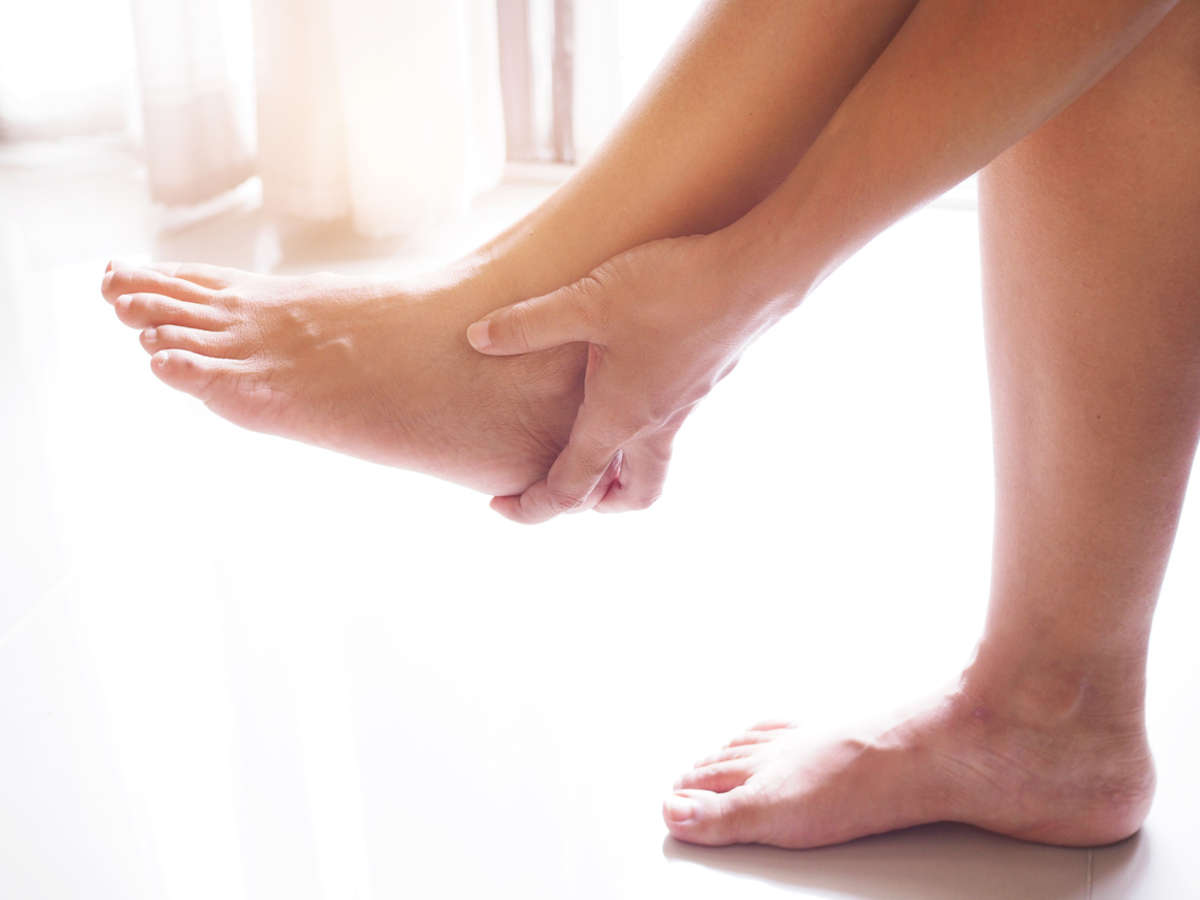Diabetic neuropathy is a common and serious complication of diabetes in which nerves throughout the body become damaged as a result of high blood sugar levels. Most often, patients develop damaged nerves in their legs and feet. Diabetic neuropathy affects people differently, with some people experiencing only minor problems and others suffering debilitating pain.

What causes diabetic neuropathy?
Researchers speculate that sustained high blood sugar levels damage nerves and impede their ability to send signals to and from the brain, leading to the development of diabetic neuropathy. Additionally, studies have shown that high blood sugar levels can weaken the walls of blood vessels that bring oxygen and nutrients to the nerves.
Other causes that may contribute to the development of diabetic neuropathy include:
- Inflammation of the nerves due autoimmunity.
- Genetics — some people may have inherited variants of genes that make them susceptible to nerve damage.
- Drinking alcohol and smoking have both been shown to damage nerves and blood vessels.
What are the potential symptoms of diabetic neuropathy?
1. Peripheral neuropathy
The most common type of diabetic neuropathy, peripheral neuropathy, primarily affects the feet and legs, and then the hands and arms. The symptoms of peripheral neuropathy include:
- Numbness and tingling
- Reduced ability to feel pain
- Reduced ability to feel changes in temperature
- Burning sensation
- Sharp pains
- Cramps
- Higher sensitivity to touch
- Muscle weakness
- Reduced reflexes
- Impaired balance
- Foot problems, including ulcers, infections, and joint or bone pain
These symptoms are normally worse at night time.
2. Autonomic neuropathy
Autonomic neuropathy is a condition that affects your heart, stomach, intestines, eyes, bladder, and sex organs. Symptoms associated with autonomic neuropathy include:
- Lack of awareness
- Bladder problems (urinary tract infections)
- Constipation or diarrhea
- Gastroparesis, a condition in which stomach emptying is delayed
- Issues with swallowing, sweating and controlling body temperature
- Erectile dysfunction, vaginal dryness, and reduced sexual response
3. Radiculoplexus neuropathy (diabetic amyotrophy)
Radiculoplexus neuropathy is another type of diabetic neuropathy that specifically affects the nerves of the thighs, hips, buttocks, and legs. Radiculoplexus neuropathy is much more common in type 2 diabetics and older diabetes patients. Symptoms of radiculoplexus neuropathy include:
- Significant pain of the hips, thighs, or buttocks that develops over the course of the day
- Weak thighs
- Shrunken thigh muscles
- Difficult getting up when sitting down
- Abdominal swelling
- Weight loss
4. Mononeuropathy
Mononeuropathy is a complication in which a specific nerve of the face, torso, or leg is damaged. It tends to mostly strike older people and develops suddenly, causing severe pain. Fortunately, it doesn’t lead to too many long-term issues and symptoms will generally go away over a period of a few weeks to a few months.
The symptoms include:
- Pain
- Difficulty focusing
- Impaired vision
- Ache behind one ear
- Paralysis that affects one side of the face
Risk factors: Who is at risk of diabetic neuropathy?
While all people with diabetes can develop neuropathy, some factors increase your risk:
- People whose blood sugar levels are not well controlled are at a higher risk, as high blood sugar levels lead to nerve damage.
- Duration of diabetes. People who have had diabetes for a longer time are more likely to develop diabetic neuropathy.
- Kidney disease. Diabetic people with kidney disease are more likely to develop nerve damage due to the fact that kidney damage causes toxins to build up in the blood.
- Weight. Studies have shown that overweight diabetics have a higher risk of diabetic neuropathy.
- Smoking. Diabetic smokers are more likely to develop nerve damage.
Complications of diabetic neuropathy
Diabetic neuropathy can lead to numerous complications, such as:
- Losing a toe, foot, or leg.
- Joint damage
- Urinary tract infections
- Urinary incontinence
- Unawareness of symptoms associated with hypoglycemia
- Sudden drop in blood pressure
- Issues with the digestive system
- Sexual dysfunction
- Issues with sweating (either increased or decreased)
Prevention: Can diabetic neuropathy be avoided?
You can do several things to either prevent or delay diabetic neuropathy, including:
- Keeping your blood glucose levels under control and making sure they remain in the normal range.
- Monitoring your blood glucose levels by using an at-home blood glucose monitoring kit. You need to constantly monitor your blood sugar levels, as higher blood sugar levels can lead to increased nerve damage.
- Staying adherent to your medications.
- Losing weight if you are overweight, as that reduces your risk of developing diabetic neuropathy.
- Quitting smoking and limiting your alcohol use.
- Making sure to take good care of your feet and checking your feet for any sores, blisters, bruises, or ulcers that don’t heal every day. Try to keep your feet as clean and as dry as possible. Have a comprehensive foot exam from a professional at least once a year. Moisturize your feet to make sure the skin doesn’t crack and wear shoes that fit well and let your toes move.
- Dyck, Peter James, et al. "Diabetic neuropathy." (1987).
- Clarke, B. F., D. J. Ewing, and I. W. Campbell. "Diabetic autonomic neuropathy." Diabetologia 17.4 (1979): 195-212.
- Said, Gérard. "Diabetic neuropathy—a review." Nature Reviews Neurology 3.6 (2007): 331.
- Photo courtesy of SteadyHealth


Your thoughts on this